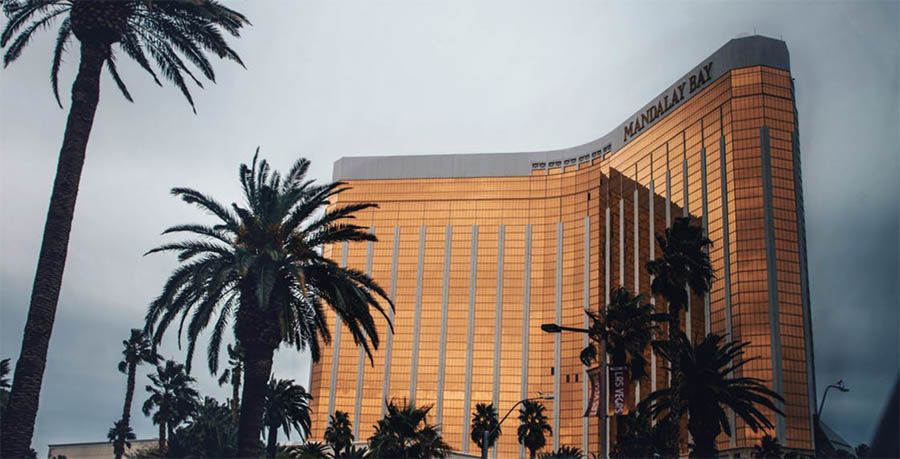Las Vegas for many people is a place that isn’t just about gambling but it also an intriguing mix of retro old school culture and modern day entertainment. From the days of the rat pack, to modern day gaming and huge shows and events.
The 1950s were a pivotal time for the world. Nations were moving on from the previous decades’ hostilities into an era of optimism and prosperity. This was no more present than in the architecture, arts, fashions and entertainment of the era, still held in such high regard today.
One place that perhaps benefitted most from the new outlook of the world – and the consumer trends that came with it – was Las Vegas. The 1950s was arguably the most influential decade in the history of Las Vegas and saw it transform from a run-of-the-mill gambling resort, to one of the entertainment epicentres of the US.
How Vegas came of age in the 1950s
During the 1950s, Vegas made the first steps to becoming the glitzy and glamourous city we know now. Nowadays, Vegas is known worldwide as the world capital of gambling. But at the start of the 1950s, it was home to just under 25,000 people.
Halfway through the decade, Vegas was posting annual casino revenues of $200 million, which is the equivalent to around $2 billion in modern terms. Gambling is a peculiar industry in that it prospers in times of stagnation and decline and levels out when the wider economy improves.
In the aftermath of the Second World War, the American economy was in flux. Sure, it had emerged out of the Great Depression, but it wasn’t stable. Las Vegas defied the odds and went from strength to strength. But how has Vegas’s expansion during that time affected our modern world – and where is its legacy?
Influencing commercial branding and popular culture

Vegas’s influence on the world of gambling can partly be attributed to the designs of their casinos – which introduced the world of glitz and glamour. In the 1950s, the city saw an explosion in the popularity of gambling – and the acceptance of it. This fuelled the need for more gaming establishments to be built, each one more ostentatious than the next.
The early pioneers of casino design in this era paved the way for the future designs of their modern online counterparts – with one operator in particular paying homage to the stylings of the era.
One online operator that’s widely believed to be one of the most unique is 777 online casino, as it’s got a distinctly retro look and feel. Here the game choices and imagery around the colours, fonts and graphics you’d typically have seen on the strip during the decade.
On its homepage, the first thing you’re greeted by when you scroll down is an image of a classic car driving through the desert towards the gambling oasis of Las Vegas – a true nod to 1950s Las Vegas culture. Of course, the site also has all the perks of the modern world too, with high-quality graphics and powerful speeds providing a richer experience for players.
This online casino isn’t alone in tapping into the nostalgia that remains around the 1950s era in popular culture today. Green Book, Revolutionary Road and Julie & Julia are all highly acclaimed films set in this period, strongly reflecting the look and feel of the era.
Retail brands have also used inspiration from the 1950s to help sell products in the modern marketplace. For example, SMEG refrigerators retain an unmistakably retro aesthetic harking back to the dawn of consumerism. While on the surface it looks stylishly old-fashioned, it’s packed with modern-day power and efficiency – again, providing the best of both worlds.
Making the music scene what it is today

Attitudes to gambling in the 1950s were a lot different to what they are today. Of course, opponents to gambling still exist – but back then, the anti-gambling lobby was much bigger and more influential. Pressure groups weren’t afraid of applying pressure to federal and national governments to clamp down on gambling.
Vegas casinos looked to combat this by diversifying their entertainment offerings. Venues started to collaborate with musical behemoths like Sammy Davis Jr, Frank Sinatra and Carol Channing to draw in non-gambling crowds. By the 1960s, the term ‘The Rat Pack’ was affectionately used to describe the aforementioned group of entertainers.
As a result, Las Vegas hosted some of the biggest music concerts in the western world. Casino owners were keen to demonstrate they weren’t only interested in making profits from gambling. They were also committed to bringing musical talents to the city, benefitting the local community and driving tourism.
This created a counter culture, whereby a host of other musical performers descended upon Las Vegas in the hope of boosting their careers and hitting the big time.
The effect of these early musical pioneers can still be seen in Las Vegas today, with a host of musical luminaries playing in the city. Stars like Kanye West, Elton John and Britney Spears have all made appearances in Sin City recently. This foregrounds the lasting appeal of the city as a musical mecca. In fact, you might argue that music stars wouldn’t be performing in arenas today if Vegas hadn’t shown they could sell out its biggest venues in the 1950s.
Bringing the boldest architecture to the world

In the late 19th century, Las Vegas was a barren desert, home to a few brave miners who were seeking fortune for seasonal work. By the 1950s, this sprawling city had truly shaken off that image and developed its own identity.
Taking the attitude of ‘imitation is the sincerest form of flattery’, Las Vegas began to invest in building mimicked world landmarks and monuments. Structures like Caesars Palace, the Colosseum and even replicas of Venice’s canals all sprung up across the city – bringing the globes most famous structures into one place.
Tourists could now simply travel to Las Vegas to have their picture taken by the Pyramids or the Eiffel Tower. These gaudy monuments initially angered many in Europe and across the world, but they laid the foundations for the pastiche architectural styles and influences of modern-day Las Vegas.
The American gambling city is often derided for its ‘tacky’ or ‘gaudy’ appearance, but this is something that Vegas has owned and pioneered. Hotel and casino complexes like the MGM Grand Hotel & Casino – with 30 floors and 7,000 rooms – are the living embodiment of this and are proudly hailed by the city’s locals as a sign of how far Vegas has come.
Rather than shunning this image Las Vegas has sought to own it, build on it and stamp its own cultural identity on it. Today, these copycat structures have become visitor hotspots and find themselves in all the city guides and Top 10 lists.
Summary
The 1950s was a crucial decade in the history of Las Vegas and we have a lot to thank to early pioneers for. They laid the foundations for the modern-day tourist hub that Vegas is now, and for that, the millions of visitors each year should be eternally grateful. Not only that, but the feeling associated with Vegas – the glitz and glam, and the notion that anything is possible – is so strong that it still resonates in popular culture today.


How to Throw the Perfect Casino-Themed Party – Mole Empire
Jun 17, 2021 -
[…] consider a Vegas-slash-casino aesthetic. This fun style can really supercharge your party, giving a glitzy, glamorous feel and also giving your guests plenty to look at and talk about. Of course, it’s one thing talking […]